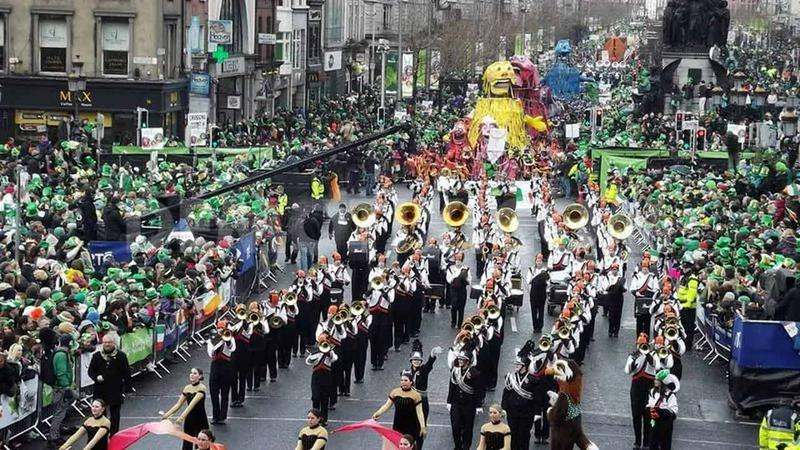St. Patrick’s Day: Origin And Tradition
By | March 14, 2019
St. Patrick’s Day Parade. Source: (pinterest.com)
Every year on March 17th, celebrations take place in honor of St. Patrick’s Day. These celebrations such as parades, wearing the color green, eating the traditional dishes such as Corned Beef and Cabbage, and drinking green beer in Irish pubs have become traditions over the years. Where did these traditions originate from and what do they really represent?
Wherever they came from, they have become annual celebrations throughout the world but especially in the U.S. and Ireland. The origin of St. Patrick’s Day, of course, starts with St. Patrick. But who is he and what is his significance that prompted such celebrations?
Irish Slaves. Source: (pinterest.com)
There are some misconceptions that have been passed down about St. Patrick. To start with, St. Patrick was not even Irish and his name was not even Patrick. His name was actually Maewyn Succat and was born in Wales in the late fourth century A.D. Growing up as a young boy, he was an atheist even though he lived in a Christian family. At the age of 16, a group of Irish raiders came to his village and kidnapped him, taking him back to Ireland and made him a slave. He was in a country where they spoke a language he did not even know so he was quite alone and most assuredly afraid. For the next six years, he was enslaved.
Passage on ship. Source: (olddesignshop.com)
Before his death, he wrote a book called “St. Patrick’s Confessio,” St. Patrick wrote about his experiences. A lot like the Apostle Paul, he was quite humble and admitted he was a sinner. In his book he explains, how at first, he was determined that one day he would get even with his captors, but as time went by, he changed. He began praying and heard a voice inside of him giving him direction, and through dreams, he was shown what he was to do. One night, either in a dream or in a vision, he saw a boat and the voice told him that he was going to be free and would be going home. The next morning he escaped into the woods, and, while traveling at night to avoid being seen, he walked 200 miles to the seashore. There he saw a boat and, at first, the captain was not going to let him aboard because he could tell he was a runaway slave. Just as he sadly turned to leave, one of the sailors called him over and let him board the ship.
St. Patrick’s use of the clover. Source: (visitwarrenpoint.com)
About ten years after he had returned home to Britain, St. Patrick began having dreams of the people he knew in Ireland. The people were calling out to him and he felt very strongly that he was supposed to go back and convert them to Christianity. His family, of course, did not want him to leave. They tried to convince him that his life would be in danger if he returned there, but he didn't care. Upon his return to Ireland, he changed his name to Patrick and began to preach with many being converted. He used symbolism such as the three-leafed clover to explain the Trinity to them. In 1978, the shamrock became Ireland’s symbol after the 1798 Irish Rebellion, which is why they began wearing green on their lapels.
The Druids. Source: ( youtube.com)
The Druids were not happy with St. Patrick’s preaching. They were a mystical group who had some unusual beliefs such as worshipping wood, particularly the oak. Not only did he suffer at their hands, but St. Patrick explained how sad he was when he had just baptized a group of young converts, and then the very next day the Druids came in and slaughtered them.
While certain legends and myths evolved, he actually did become legendary. He was looked upon as a saint. Some even said that he drove snakes out of Ireland. Although this most likely did not literally happen, the snakes were probably metaphorical to symbolize evil. Celebrations surrounding the assumed date of his death began taking place sometime during the 17th century.
Maewyn Succat (St. Patrick) Source: (freedomsystem.org)
Green was not really the official color of the Irish. It was actually blue but because the Irish did not want to associate with the color of the British (as that was more associated with English rule), they changed the color to green.
The first actual parade did not even take place in Ireland. It was thought to have started in Boston, Massachusetts in 1736, but recent historians have discovered evidence that has led them to believe it was in 1601 in St. Augustine, Florida.
People celebrate a lot of holidays without really knowing why and even what they are celebrating. It is interesting to go back and take a look at the origins of these traditions and discover new things.







